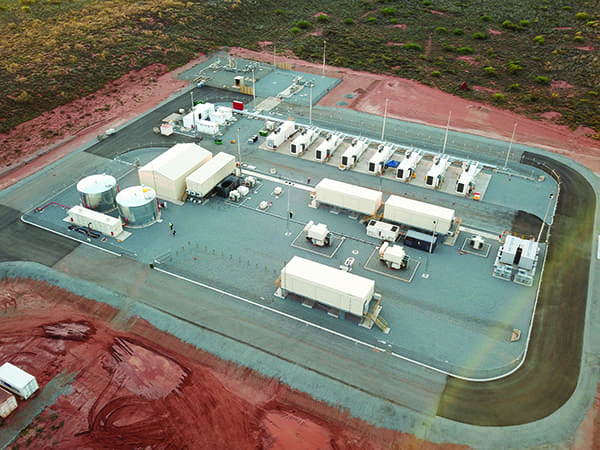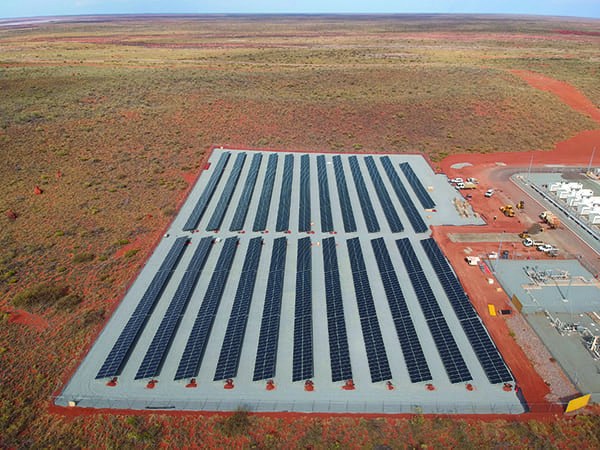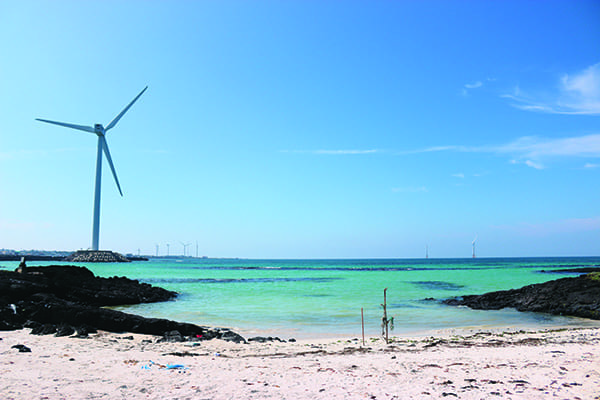Innovative Distributed Generation Projects Provide Power to Remote Areas
The post Innovative Distributed Generation Projects Provide Power to Remote Areas appeared first on POWER Magazine.

Remote communities have become testing grounds for innovative power projects. These areas traditionally have been powered by fossil fuel generation, usually diesel fuel or oil and sometimes natural gas, and impacted by volatile prices and transportation issues for the fuels. Efforts to eliminate those impacts, including carbon emissions, and developing electricity solutions powered by renewable energy have been a priority for companies working on technologies for microgrids and distributed energy resource management systems (DERMS).
PXiSE Energy Solutions (pronounced pice"), a subsidiary of San Diego, California-based Sempra Energy, has been deploying its power plant and grid control systems, along with microgrids and comprehensive DERMS designs, in projects in several regions, including Australia, Japan, and South Korea. The company's software power-grid management technology is being used by renewable energy developers and operators, grid operators, commercial and industrial property owners, and incorporated into microgrid designs. Its efforts are part of a global wave of bringing cleaner, more reliable power to areas far away from a traditional grid, and at times to areas that have not previously had access to electricity. In some of these areas, renewable energy may be the only way to get power.
We're seeing a lot of interest from utilities in multiple parts of the world, be it Japan, Europe, or the U.S.," said Patrick Lee, president and co-inventor at PXiSE, in an interview with POWER. All the people recognize that localized generation, whether it's community solar, rooftop solar, EVs [electric vehicles], batteries that people are deploying... it's about providing power generation and having more control over that generation. In some cases it's a matter of adding a solution to the existing network to continue to provide the customers with what they need."
 |
1. The microgrid in Onslow, Australia, incorporates several technologies. The installation includes eight 1-MW natural gas generators, a 1-MW diesel generator, 1 MW of solar power generation capacity, and a 2-MW/1.25-MWh battery storage system, along with a PXiSE high-speed microgrid controller. Courtesy: PXiSE Energy Solutions and Horizon Power |
Two of PXiSE's recent projects, in Onslow, Australia (Figure 1), and on Jeju Island off the coast of South Korea, show the possibilities of adding grid control technology, and using microgrid concepts, to provide a cleaner and more reliable power supply. It's a process that also has been touted for use in the U.S., in particular in areas prone to natural disasters. New Jersey has set in motion a program to fund a statewide microgrid network; 13 communities in the state have been awarded grants to study the feasibility of a microgrid, an effort that sprung from the devastation to the state's power grid during Superstorm Sandy in 2012. In California, utilities have looked at microgrids as a way to provide reliable power in areas prone to wildfires.
We have one California utility with multiple microgrids that they're interested in deploying prior to the fire season," said Lee. I think long-term a large network would be organized into a regional grid structure. And the operation of that would be the concept of a network of microgrids."
What might those microgrids look like? Lee used the Onslow project as an example, noting how the microgrid has moved the remote area on Australia's northwest coast away from its reliance on diesel-powered generation. The town is served by Horizon Power, one of Western Australia's primary utilities. Horizon provides power to remote towns, beach communities, and agricultural regions, across a vast service territory of more than 888,000 square miles. That area, though, has a customer base of only 47,000-meaning, according to PXiSE, that Horizon has the largest service territory with the fewest number of customers in the world. Horizon has a goal of decreasing generation costs and providing more sustainable electricity to its customers, and has begun installing solar power and battery storage to supply more of the region's energy demands with renewable sources.
With a large part of the Onslow microgrid made up of solar and storage [3 MW in total], the town is able to offset the use of much of the diesel generators that historically provided power for this community. The PXiSE Microgrid Controller has enabled Onslow to increase its annual renewable energy contribution to exceed 50%, and operate on almost full renewable power during certain seasons and times of the day, thus dramatically reducing reliance on fossil fuels," said Lee. It is estimated that the town will be able to reduce carbon emissions by over 800 tons per year."
 |
2. The Onslow microgrid's solar array is part of a system helping power a remote Australian town of about 850 people. It provides power to the town's residents, and commercial and industrial sites. Courtesy: PXiSE Energy Solutions and Horizon Power |
The Onslow project was initiated in 2016 by Horizon Power, Chevron Australia, and the Western Australia state government, and came online in 2019. Chevron has invested more than $250 million toward infrastructure projects in Onslow as part of a State Development Agreement led by the company's Wheatstone LNG project, a liquefied natural gas plant that took its first shipment of LNG in 2017. The first stage of the Onslow microgrid project delivered gas-fired generation and associated infrastructure, including a transmission line, zone substation, and distribution network extension; the second stage saw the completion of a centralized 1-MW battery storage system and 1-MW solar farm (Figure 2).
Horizon Power CEO Stephanie Unwin said the project is important to Western Australia's renewable energy transformation. The microgrid management technology is an amazing piece of technology that is new to this state and allows for the careful management of the various energy sources in the town," she said. The benefit to the community from this stage of the project is more reliable, cleaner and greener power through the incorporation of utility grade solar and battery assets into the power infrastructure."
Onslow has a population of about 850, with much of its energy demand coming from commercial and industrial loads, and about 600 residential homes, some with rooftop solar and some with battery storage," Lee said. He noted that the microgrid is configured to provide energy to the town with several technologies, including:
- Eight 1-MW natural gas generators
- One 1-MW diesel generator
- 1 MW of solar power generation
- A 2-MW/1.25-MWh battery storage system
- A PXiSE High-Speed Microgrid Controller
The PXiSE microgrid controller will prioritize renewable energy generation and distribution over the thermal generation when the environmental conditions permit," Lee said. In the case of intermittent clouds, the controller reacts instantaneously to automatically ensure the power flow and quality are reliable. The system is able to forecast the energy load and co-optimize [the] battery energy storage system (BESS) with the solar PV and generators."
Lee noted that the microgrid controller is the brain of this community's power grid. It is an autonomous controller that operates accurately in sub-second response times to improve reliability, increase efficiency, and enable higher penetration of renewable energy. For Onslow, the microgrid controller gathers real-time grid data using sensors (phasor measurement unit data) and quickly makes decisions to co-optimize the output of the energy assets. The controller can accurately make these decisions and adapt to changing grid and customer needs in milliseconds to ensure grid resilience and economic value."
The integration of renewables is a key part of the Onslow installation, as it is with many of today's advanced microgrids and DERMS. Lee said a microgrid controller enables a utility to increase the percentage of renewables to 50% and beyond, when a cap previously occurred at around 30%. Using high-speed controls along with our sensor-based technology to pull in accurate location and time information, PXiSE control technology enables the increase of renewable energy integration by mitigating disturbances and balancing the generation and storage assets in real time. For example, if a cloud shades the solar panels, the solar power output drops in seconds. The system is able to respond quickly and manage the supply drop with the BESS, which it can dispatch in milliseconds to make up for the loss of solar."
Australia has discussed a so-called federation of microgrids" that would replace current diesel generation in rural Australia with DERMS systems, in an effort to reduce emissions, take more control of energy costs, and promote renewable energy. Having the largest territory of any utility on earth with many smaller, remote communities, Horizon Power has taken the lead as an innovative utility," Lee said. Starting with Onslow, the utility plans on deploying a series, or federation, of microgrids integrating high levels of renewable energy across its vast territory that will be connected and coordinated using the PXiSE control technology. By integrating utility DERs with customer DERs, the coordination of all assets will increase reliability while lowering generation costs for these rural communities. With each microgrid enabling more than 50% of renewable energy generation, Horizon Power will become a model for utilities throughout the world seeking a reduction of thermal generation within their grids."
 |
3. The Jeju Island project includes a 600-kW wind turbine, used in conjunction with 500 kW of solar power generation and 1.2 MW of battery storage. Courtesy: PXiSE Energy Solutions |
The Jeju Island project in South Korea incorporated a PXiSE controller into an existing power generation installation (Figure 3). The Jeju Haengwon Eco-Town DER Optimization (JHEDO) Project was aimed to showcase the coordination and balance of multiple DERs like wind and solar with a BESS.
Said Lee: The PXiSE advanced controller was added to demonstrate how a high-performance, software-based solution can be implemented in weeks, with only four days of onsite configuration. Led by Jeju University, LG CNS (a subsidiary of LG Corp.), and Jeju Haengwon Eco-Town, the project shows how, when deployed on a larger scale, the island could meet its renewable energy goals while saving on electricity costs."
Energy analysts have said renewable energy projects are likely to be paired more often with storage moving forward, as storage technology improves, and utilities and other power generators look to increase their adoption of renewable resources. The [Jeju] project proves that high levels of renewable energy paired with BESS are capable of meeting the electricity demands, whether on an island or on a larger land mass," Lee said.
The JeJu project, in addition to a PXiSE power plant controller, includes 500 kW of solar power generation, with a 600-kW wind turbine, and 1.2-MW/1.0-MWh LG battery storage system. The PXiSE controller was configured to store wind- and solar-generated power in the BESS during the day when power demand and prices are low, then dispatch the BESS energy at night when demand and prices rise," said Lee. By providing the energy shifting and ramp control, the BESS plays an important role in optimizing the efficiency of the renewable resources while maintaining reliable and quality power."
JeJu incorporates wind energy with battery storage, a design that other areas are developing or studying in an effort to incorporate renewable power and provide reliable, resilient power. There's a growing need for microgrids powered by renewables to support a more resilient grid, and wind can play an even larger role, especially for islands and remote areas," Lee said. There is deepening support for diverse sets of DERs for microgrids to create reliability and improve the efficiency of our energy systems."
Lee said power control technology demonstrates how a software-based solution can be configured to integrate wind, solar, and storage to support energy demands anywhere. There have been, and we will continue to see, shifts in regulation that recognize distributed energy as a powerful grid resource with renewables providing an increasing percentage of that energy," Lee said. He noted that his company's technology is among those proving that microgrids and DERMS will be the building blocks of how we operate the grid of the future."
-Darrell Proctor is associate editor for POWER (@DarrellProctor1, @POWERmagazine).
The post Innovative Distributed Generation Projects Provide Power to Remote Areas appeared first on POWER Magazine.